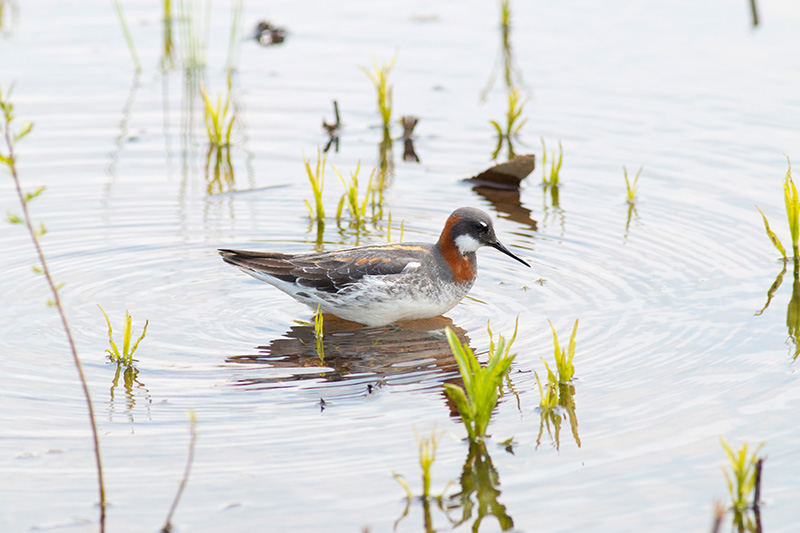Red-necked Phalarope: A Rare Lycoming County Bird
5/31/15
By David Brown
We all know people who call us for only one reason. Perhaps it is someone from work asking you to cover a shift or the library calling to say a reserved book is in. When Eric Hartshaw calls me it means he has found a good bird. A few weeks ago while eating lunch I got a phone call from Eric. I made a split second calculation that it would be more time efficient to focus on quickly finishing my food and hope he left a voicemail with the information. Instead he immediately called back so I assumed it must be something really important and answered. He had found a red-necked phalarope along the shore of Loyalsock Creek at Mill Street in Montoursville. The only time I had seen a red-necked phalarope was fifty miles out onto the Atlantic Ocean on a pelagic birding trip, and as far as we knew one had never been found before in Lycoming County. I rushed out and met up with Eric to get a look at the bird myself.

Red-necked Phalarope, Mill St.
Phalaropes are a type of shorebird belonging to the sandpiper family. This red-necked phalarope was in the most beautiful plumage of the species: the female breeding plumage. In most bird species where the sexes look different, males are brightly colored and females are more plain to be camouflaged while nesting. For phalaropes, the roles are reversed with the females having the more striking breeding plumage and the males incubating the eggs and raising the young. Three species of phalarope exist: red, red-necked, and Wilson's. All three species are rare visitors to Pennsylvania with at most a handful found each year. Our bird was the first red-necked phalarope reported in the state this year. Exactly two years earlier, a red phalarope was found on Lycoming Creek near Bowman Field in Williamsport. Red and red-necked phalaropes breed in the arctic and winter offshore on tropical ocean waters, so the ones found in Pennsylvania are only stopping to rest while migrating between those sites.
Our bird was remarkably tame. While birding it is always important to keep a distance to minimize disturbance to a bird, but as we stood there she wandered up the shoreline to within twenty feet of us and seemed to not even notice her paparazzi. Phalaropes are known for their unique style of feeding where they spin in a circle creating a whirlpool to pick aquatic insects from, however while we watched she fed by simply pecking while standing in shallow water. I had assumed that phalaropes were quite large, but the close look let me see that they are only about the size of an American robin or slightly smaller.
I went back later in the day and she was still feeding in the same area. I checked the next morning, but as expected, she had left, continuing her journey north to the Arctic tundra.